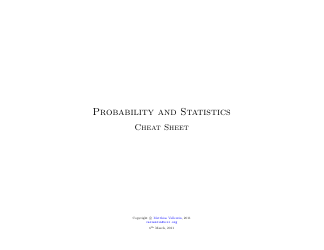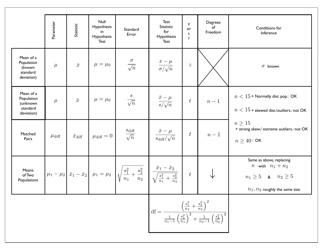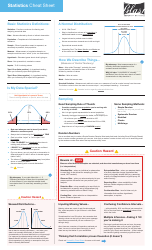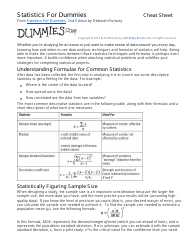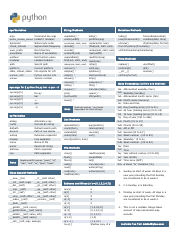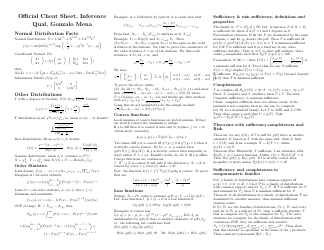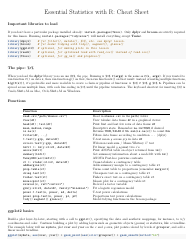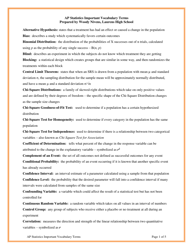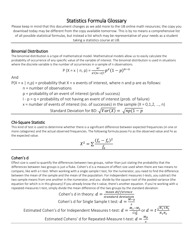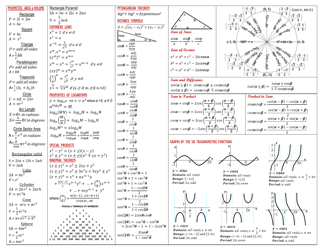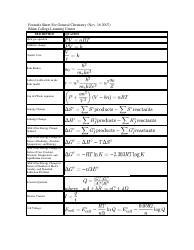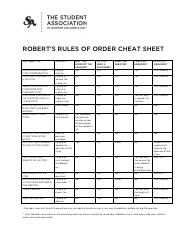Statistics Cheat Sheet - Principles of Statistics, University of Nevada
The Statistics Cheat Sheet - Principles of Statistics, University of Nevada is a quick reference guide or summary of key concepts and formulas in statistics. It is designed to help students understand and apply statistical principles in their coursework or exams.
FAQ
Q: What is statistics?
A: Statistics is the study of collecting, analyzing and interpreting data.
Q: What are the two types of statistics?
A: The two types of statistics are descriptive statistics and inferential statistics.
Q: What is descriptive statistics?
A: Descriptive statistics involves organizing, summarizing and presenting data.
Q: What is inferential statistics?
A: Inferential statistics involves drawing conclusions and making predictions about a population based on a sample.
Q: What are the measures of central tendency?
A: The measures of central tendency are mean, median, and mode.
Q: What is the mean?
A: The mean is the average of a set of numbers.
Q: What is the median?
A: The median is the middle value in a set of numbers when they are arranged in order.
Q: What is the mode?
A: The mode is the value that appears most frequently in a set of numbers.
Q: What are measures of variability?
A: Measures of variability include range, variance, and standard deviation.
Q: What is range?
A: Range is the difference between the highest and lowest values in a set of numbers.
Q: What is variance?
A: Variance measures the spread between numbers in a data set.
Q: What is standard deviation?
A: Standard deviation is a measure of how spread out the numbers in a data set are around the mean.
Q: What is probability?
A: Probability is a measure of the likelihood of an event occurring.
Q: What are the two types of probability?
A: The two types of probability are theoretical probability and experimental probability.
Q: What is theoretical probability?
A: Theoretical probability is based on mathematical calculations and assumptions.
Q: What is experimental probability?
A: Experimental probability is based on actual observations and data.
Q: What is a hypothesis?
A: A hypothesis is a statement or assumption about a population that is subject to testing and investigation.
Q: What is a null hypothesis?
A: A null hypothesis is a statement of no effect or no relationship between variables that is tested in statistical analysis.
Q: What is a alternative hypothesis?
A: An alternative hypothesis is a statement that contradicts or negates the null hypothesis.
Q: What is a confidence interval?
A: A confidence interval is a range of values within which a population parameter is estimated to lie with a certain level of confidence.








